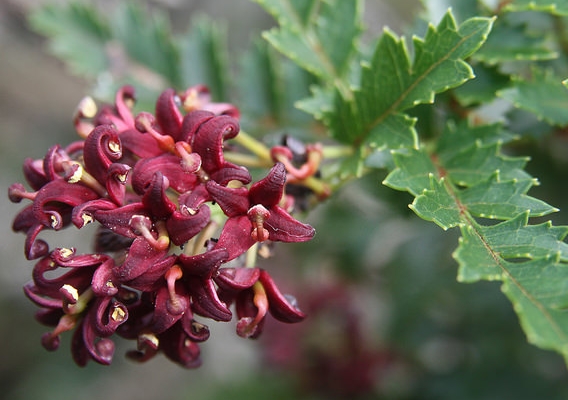King s holly plant or lomatia tasmanica may flower but has no fruit or seeds this strange plant has reproduced for nearly 43 600 years by cloning itself it drops a branch that becomes its own plant with identical dna

King’s Holly Plant: A Cloning Wonder

The world we live in is full of surprises and wonders, especially when it comes to the fascinating realm of plants. Nature often surprises us with its remarkable adaptations and unique strategies for survival. One such extraordinary plant is the King’s holly plant, scientifically known as Lomatia tasmanica, which defies conventional reproduction methods.
An Astonishing Reproduction Strategy

Lomatia tasmanica is a plant endemic to the wild landscapes of Tasmania, an island state in Australia. What sets this plant apart from others is its unusual reproductive behavior. Unlike most plants, the King’s holly does not produce any fruit or seeds. Instead, it has survived and thrived for nearly 43,600 years solely by cloning itself.
The cloning process of the King’s holly plant is truly remarkable. It reproduces by dropping a branch, which then takes root and develops into an entirely separate plant with identical DNA. This unique adaptation ensures that the new plant is an exact replica of its parent, sharing the same genetic makeup and characteristics. It is a fascinating phenomenon of asexual reproduction, where the plant perpetuates its lineage through cloning rather than sexual reproduction.
A Remarkable Survival Strategy
The ability of the King’s holly plant to reproduce through cloning has played a vital role in its long lifespan and survival. This survival strategy ensures that the plant is capable of colonizing new areas and expanding its population without relying on external factors, such as pollinators, in the reproduction process.
The success of the King’s holly plant’s cloning strategy lies in its resilience and adaptability. Clones that sprout from fallen branches can establish themselves in diverse environments, such as rocky terrains or nutrient-deficient soils. This enables the plant to persist and multiply even in challenging conditions. Furthermore, since the clones possess identical DNA to their parent plant, they maintain the same desirable traits, enhancing their chances of survival in their respective environments.
A Living Ancestor
Lomatia tasmanica is not just an ordinary plant; it is a living testament to the ancient past. DNA analysis has revealed that this remarkable species has remained virtually unchanged for over 43,600 years. This makes the King’s holly plant one of the oldest known living organisms on Earth, making it a true living relic from the past.
The long lifespan of the King’s holly plant is attributed to the isolation and stability of its natural habitat. Tasmania’s remote and undisturbed landscapes, coupled with the plant’s extraordinary cloning ability, have ensured the plant’s survival throughout millennia. It serves as a living reminder of the rich evolutionary history and incredible adaptability of plant life.
In conclusion, the King’s holly plant, or Lomatia tasmanica, stands as a testament to nature’s ingenuity and adaptation. Its ability to reproduce through cloning, despite the absence of fruits or seeds, has allowed this extraordinary plant to endure for thousands of years. As we marvel at its cloning wonder, we realize the incredible resilience and tenacity of nature. The King’s holly plant remains not just a living organism but also an invaluable link to our planet’s ancient past.
Source: Wikipedia - Lomatia tasmanica
Tags
Share
Related Posts
Quick Links
Legal Stuff

